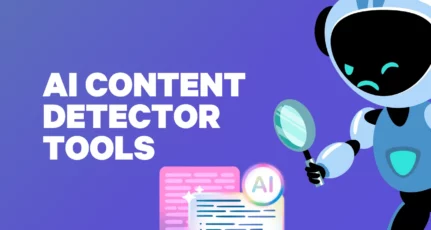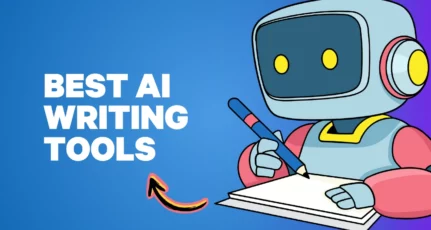You’ve just written a masterpiece.
You’ve posted it on your blog or website.
And you’ve promoted it on your social media accounts.

But no one is commenting.
No one is clicking your links.
And no one seems to care!
Painful, isn’t it?

When you run a website or blog as a business, the goal is to get conversions. This can be defined in any number of ways.
A conversion could be:
- Buying your product (if you have a product).
- Signing up to your email list.
- Leaving a comment.
- Joining one of your social media accounts.
- Repeatedly viewing your website.
A conversion just means that the user has taken the action that you desire most. And if the user is not taking that action, then there is something wrong.
Now, it could very well be that the user is not interested in the material and has landed on your site accidentally. Or maybe they just weren’t ready to take the desired action.
In fact, it’s probably true that most people who land on your site are not going to turn into conversions. The average conversion rate for landing pages (i.e. the first page a visitor sees) is 2.35%. The top 25% of marketers are converting at 5.31%. And the top 10% are at 11.45%.
That means that, on average, less than 3 people out of 100 take a desired action on a page.
If you’re falling well short of that, then the problem is likely not the users landing on your page – though if you are targeting in the wrong places, it could be – it’s likely that your website copy is not written well enough.
So here are 5 reasons why your website copy might not be converting as well as it should be.
1. You haven’t laid out the problem.
This post has stated a clear problem:
Your website copy is not converting.
When you go to read this article, you know that it will address this issue. If you have at all been touched by this issue in the past, you know that coming to this article could potentially alleviate your problem.

Writing on the web is all about problems.
Why?
Because when people search for something on the internet, they’re searching for ways to solve problems.
A “problem” does not need to be serious or grave or something that needs an expert’s knowledge to fix. A “problem” can loosely be defined as “an issue”.
Any kind of issue. Big. Small.
Think about what a user would search for on the internet. They’re all problems.
Here are some examples of post titles with obvious problems:
“25 Ways to Fix a Broken Engine” – This post is addressing the problem of a broken engine.
“16 Recipes for Vegetarians” – By offering recipes, the author is stating that the problem is not knowing what to eat as a vegetarian.
“The Greatest Cat Memes of All Time” – The problem here is boredom and the burning desire to see cat memes.
These problems are identifiable and specific. They are clearly defined and laid out. They immediately engage with readers because they are exactly what readers are looking for when they search for things on the internet.
Identifying Pain Points
As a content creator and/or marketer, you need to identify your customer’s pain points.
You need to figure out what is a problem and what needs a solution.

There are a few ways to highlight pain points:
1. Search forums/Facebook groups
Find out where your customers are hanging out and go there. Engage with them about what they’re looking for and what their problem is. BUT DON’T TRY TO OFFER THEM A SOLUTION JUST YET. Spamming people only hurts your brand. Just identify what is causing pain in the community you’re targeting.
2. Look at competitor’s content to pinpoint similar pain points
Use a competitor in your field to see what they’re talking about. Now, don’t go and plagiarize their stuff, but see what kinds of topics they’re addressing. Check out which articles are getting the most engagement (e.g., social shares, comments, etc.). Use those topics as inspiration for your articles.
3. Find the concern in comments
Comments are a great way to identify problems because they offer one of the only places that customers are able to engage with a brand. If you’re not popular enough to have commenters on your own website, go to a competitor’s comments and see what people are complaining about.
Because if your post doesn’t have a problem, it will be boring.
2. You aren’t solving a problem.
You’ve clearly laid out a problem.
So what?
Your customer already knows what the problem is, they don’t need you to repeatedly tell them the problem over and over again.
They’ve landed on your webpage because they want help. They want you to help them fix their problem.
They’re hungry and looking for food. They don’t need to be told that they’re hungry without being offered food.
They want to see a post that says: “Hungry? Click Here for Food.”
Getting a grasp of what I am saying?
Great!

Focus on solving a pain point and advertise the fact that you have solved the said pain point. That will not only gain you a lot of fans, you’ll also be seen as the go-to resource anytime a similar pain point pops up.
Here are some examples of post titles with obvious solutions:
“99 Problems but Money Ain’t One” – The author has laid out the problem (money) and is offering a solution (no longer being a problem).
“22 Creative Uses for Cat Hair” – The author has laid out the problem (excess cat hair) and is offering a solution (22 creative uses for it).
“10 Ways to Cool Off on a Hot Day” – The author has laid out the problem (a hot day) and is offering a solution (10 ways to cool off).
These solutions are well-defined and obvious. You know that you’re getting a solution when you click on any one of these post titles.
Become a Problem Solver
Some people may find it hard to come up with creative solutions to problems, but with a little bit of practice, it’s relatively easy.
Most solutions are common sense and can be identified with one of many ideation processes.

Learning how to work through problems not only makes you more valuable to society, it also makes you a better person.
It teaches you how to flex your creative muscle and helps you empathize with your fellow humans.
Here’s an exercise:
Take a common pain point for your niche and come up with 5 creative solutions that no one has ever come up with before. Don’t do anything else until you come up with 5 things. You can make it as realistic or as non-realistic as you like (e.g. use magic, call up Superman, etc.), but don’t do anything until you have come up with 5 completely original solutions. Keep doing that every day until you have built up your creative muscle to the point where you can creatively solve any problem that you’re faced with.
3. You don’t know your audience.
I know who you are.
You’re someone who writes things on the internet, and you’re looking to build and sustain some kind of online presence.
And I’m writing this article for you.
And because I know who you are, I know how to write an article that is specifically addressing your needs.
I’m writing in a conversational, informal tone that talks about something you’re interested in. These are all things that are engaging to you because, as I said, I know who you are.

If you don’t know who you’re writing for, your piece is going to come across as muddled and un-engaging.
You don’t want to talk to your audience with an incorrect tone, an improper story, and uninteresting topics because your audience doesn’t care about those things.
They want things that are directly relatable to them. They want to feel acknowledged and validated. They want to know that you understand them.
They want to read writings that directly address their needs.
Characterize Your Audience
Take your target audience and make a list of who they are.
Things like:
- Age
- Ethnicity
- Location
- Religion
- Education
- Social Status
- Likes/Dislikes
- Professional Experience
Identify who you’re talking to whenever you write any copy.
Even things that seem insignificant can make a big impact in your writings.
Try to imagine this person in your head whenever you write. Try to imagine them sitting behind the computer screen listening to everything you’re saying.
- Do they want to be talked to in a formal way or informal way?
- Are they beginners or experts?
- Will they appreciate outside resources or do they solely want your resources?
Be concrete about who is reading your words.

4. You don’t know what you’re talking about.
There are a lot of “ramblers” out there.
Ramblers are people who talk and talk without ever saying anything of substance.
You probably know a few people like this in your daily life.
But what’s particularly interesting is that most people who talk a lot don’t usually know a lot. They use the fact that they’re saying words to hide the fact that they don’t really have anything interesting to say.
As a content creator, you need to make sure that you don’t fall into the trap of feeling like you need to “fill up space”.
You don’t need to fill up space. You need to make sure that people get the information they need. And the only way to do that is by actually knowing the information that people need.
Unless you’re an expert researcher and a professional writer who has mastered the craft of giving out information, you need to be 100% confident that you’re an expert in your niche.
No one wants to hear sewing tips from someone who has never sewed before.
Love Your Niche
Our society is filled with a whole bunch of people who hate their jobs. Still, they go to work every day.
The last thing we need is more people who hate their work.
The benefit of building a career in an online environment is that you can pinpoint exactly what you love doing and can make a living out of sharing that love with the world.
All too often, digital marketers see something that has a potential to make money and then try to do that thing. And they don’t actually care about what it is they’re doing.
That’s really dumb.
And it’s always around things like internet marketing. The amount of internet marketers that market to people who want to be internet marketers is staggering. It’s amazing that people think that that’s a good idea.

Everyone has something that they’re truly passionate about, and it’s not something that anyone else can tell you.
Maybe you love eating pasta. Or maybe you love playing guitar. Or you love philosophy. Or maybe you love tarot cards or vitamins. Anything.
Whatever it is, you have a unique passion that few other people do, and there are lots of people out there searching for your unique knowledge. Don’t deprive them of your talents just because you think you will make more money in the internet marketing niche.
Yes, some people have a passion for internet marketing, but those people will be the only ones who persist past the inevitable tedium of managing an online business.
If you love what you do, and I mean really love it, everyone will feel that love in your writings.
And that love will attract more and more traffic, and you’ll convert more and more of that traffic into devoted fans.
5. You didn’t edit and proofread.
Every day, I read countless pieces of writing on the internet from people who clearly didn’t take the time to edit and proofread.
I’m not talking about a typo here and there. I’m talking about a consistent failure at conveying even the most fundamental points of writing.
These pieces are sloppy, they’re incoherent, and yes, they’re filled with typos.
Not only does it look horrible, these people will never attract traffic that converts.
Editing is so important to maintaining a professional image that editors are some of the highest paid people in every content creation company.
They are the ones who maintain the standards of the brand and ensure that everything is done in a professional, engaging, and consistent way.
But you don’t need to hire an editor.
You can be your own editor.
You just need to get out of your own head and learn how to have perspective.

Practice Editing
Here’s a practice which I just made up, but I think will help a lot of people understand what good article structure looks like.
Take an article you’ve read recently from a professional writer. You can use this article if you’d like, but it’s better if you use something that’s more personal to you. And make sure that that writer is a professional from a highly reputable and trustworthy website.
Then, go and create a “reverse outline”. This means that after you’ve read the piece, write an outline for it.
Identify the headings, the subheadings, the main points, and the sub points.
For more info on how to create an outline, read my section on outlines in this piece.
When you’ve got the outline laid out, read it and see how all the pieces of information “flow” together. How does one idea lead to the next?
Study and examine that “reverse outline” and really try to understand why the information was presented in the order and manner in which it was.
After you’ve created and studied the outline, go back to the article and see how the author filled in the outline to make the piece well-rounded and complete.
This practice will help you learn what is and isn’t acceptable in terms of structure.
Practice Proofreading
The other part of editing is proofreading, and it’s something you absolutely must do.
The amount of people that don’t even run a spell check on their articles is insane.
At the very least, run a spell check on your piece before it’s published.

Learn how to spot grammar mistakes, learn how to spot consistency errors, and learn how to polish an article.
The first thing you should do is study grammar. Check out this site to help you with your English grammar.
The next thing you should do is learn to “carefully read”.
When most people read, they skim over words and aim to digest the entire meaning of something. But when you carefully read, you look at every single word and make sure it’s spelled correctly, placed correctly, and has correct syntax.
Go back and re-read all of your previous articles and proofread them. I guarantee you’ll find mistakes.
Even I, someone who stresses the importance of proofreading in every single SML article I write, have errors slip through every now and then. When I go back and re-read those pieces, I see them stick out like a sore thumb.
Even if all of your previous articles have already been published, go back and carefully read them.
And seriously, use a spell checker.
How To Write Things That Convert
There’s the old saying:
“The definition of insanity is doing the same thing over and over and expecting different results.”
Don’t drive yourself insane repeating the same mistakes.
If you’ve been struggling to convert readers, the reason may be that your website copy stinks.
And if it does, you need to go and fix it. Otherwise, you’ll struggle to attract any attention, any engagement, or any money for all of your hard work.
Unfortunately there’s no magic bullet to fix a piece of writing that isn’t having the desired effect.
But if you start to tweak the things that you know are working against you, you’ll have a much better chance of success.
And once you’ve figured out the keys to success, you’ll be a converting master!
And best of all, you won’t be insane.

Here are a few hand-picked guides for you to read next :





Great article Eric, this is the first time that I have read your article on shoutmeloud. I use grammarly on my browser to spot grammar mistakes on my article. I must say that the gif images that you used are very eye-catching. Thanx for sharing this article with us.
Thanks for the comment Seema! Yes, definitely need to ensure that the grammar is on point. Mistakes look sooooo bad! Keep up the good work!
We definitely need solve problems to convert Eric. I scan reader comments, social chats and top blogs from the blogging tips niche to both ID problems and to ensure my solutions are timely, in order to connect with my readers.
Yeah Ryan, it’s so important to actively be solving a problem, otherwise the reader won’t understand why you’re writing the article. You’re right. Making that connection is so crucial.
Thank you for this comprehensive guide. Quality content with a clear purpose is the key to content marketing success. Grammarly is also a great tool for proofreading.
Grammarly is indeed a great tool, Ash! So many people don’t even bother to check for spelling mistakes… So silly.
Hi Eric, Love the stat on how many conversions are made on a landing page. Made me feel better 🙂 I love using Grammarly on my browser, something new I’ve been using as I do tend to make a mistake here and there. The worst was in a headline! Yes, imagine that? It was one word that sounded correct but was misspelled. No spell check or grammar checker could have caught it. I do have some freelance proofreaders now as well. Thanks for all the tips here, makes me think about how I phrase my content. Love it!
Glad the statistic helped haha! Grammarly is super useful indeed but yeah, like you said, sometimes it can’t catch the mistake when it’s a correctly spelled but wrong word. I have those things happen to me all the time, too. But gotta read those titles 20 times before it goes live haha!!
By the time,
Technology and science has covered up with more advance feature. Any website can hide and take moderation over their website.
Unfortunately there’s no magic bullet to fix a piece of writing that isn’t having the desired effect.
But if you start to tweak the things that you know are working against you, you’ll have a much better chance of success.
That’s definitely right, Tania! You just gotta keep getting better and better. If you know where your weaknesses are, there’s no way to not progress! Keep at it!